Cardoen/Famae Piraña (1981)
 Chilean APC and IFV - 275 built*
Chilean APC and IFV - 275 built*
The Chilean Piraña
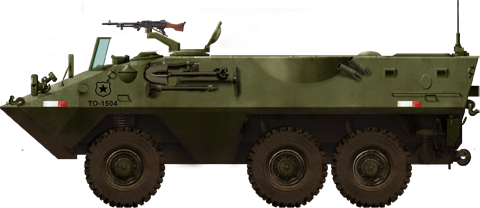
Cardoen and FAMAE (Chile) were among the many countries that fell in love with the Swiss Mowag Piranha, a brillant 1970s family of armoured vehicles that proved the basis for the wheeled IFV, APC and their variants produced instead of light tracked vehicles, around the world. Well suited for rapid reaction forces and asymetric warfare, faster and cheaper, this type of vehicle is now a standard embraced by the industries of many countries around the globe.
But it's really the Piranha that started it all. It was produced notably under licence by the US, UK and Canada among others, and derivatives are still in service today. The Chilean army possessed a small automotive industry, and by combining forces, managed to produced under licence some 250 Piraña I 6×6 and 25 Piraña I 8×8, still in its inventory in the 2000s.
About Cardoen Industries
Cardoen Industries grew in the context of a spectacular expansion of the public sector, concerning the Chilean defense industry from mid-1970s. In contrast, Cardoen Industries (Industrias Cardoen) were privately owned by Carlos Cardoen Cornejo, most successful Chilean defense manufacturer and exporter, going in less than eight years from a small specialist of demolition charges for the mining industry to an armament and industrial empire.In the early 1990s it had no less than 800 personel spread between six factories, producing everything the defense would need as well as other civilian products, with subsidiaries in Ecuador, Italy, Spain, and Greece. A specialized ordnance plant in 1989 was created in cooepration with the Guatemalan government.
For what we are concerned with, in 1979, Cardoen Industries started to look after the obsolescent park of WWII vehicle used by the Chilean Army, notably M-3A1 half-tracks refurbished years prior by Famae (which had the experiennce and training for it), but eventually stopped due to budgetary constraints. A cooperation between the two was soon able to show the BMS-1 Alacran, a completely modernized, fully enclosesd APC with a rocket launcher. A few were produced and acquired by the Chilean Army (next on tank encyclopedia).
The experience gained on the Alacran project had Cardoen helping Famae to built the Swiss Mowag Piranha 6x6 APC in the early 1980s. At the time, the Swiss manufacturers' all-wheeled APC seemed like a precursor an many armies around the world looked at it with great interest, also acquiring licences. In 1993, the company had cranked up, with the help of Famae that redesigned some elements to tailor them to Chilean needs, some 180 being in service with the Chilean Army. It was called at the time the Cardoen/Mowag Piranha. Variants such as the mortar carrier and fire-support with a 90mm Cockerill gun in turret were developed to complete the organic needs of the bataillons.
Other Developments
Simultaneously, Cardoen also develpped its own version of the 6x6, the large VTP-1 Orca APC based on a truck chassis and sharing many components with the BMS-1, and capable of carrying 16 fully equipped infantry, much more than the original and a world record at the time. The Chilean Army eventually ordered 100 Orcas and a small number of the VTP-2 4x4 Escarabajo, put in service for airfield defense. With Chinese collaboration with Norinco the company later also produced a 6x6 all-terrain truck, for both civilian and military purposes. It also tested a two-seater hovercraft, which did not led to a production. The company also produced all sorts of explosives, notably fuel-air bombs and a cluster bomb sold to Iraq in 1984-1988, becoming a world leader in this field. The company also produced the Cardoen/Hagglunds BV-206 for the mountain units of the Chilean Army.Following the deal with iraq and in the aftermath of the 1991 Persian Gulf War the company underwent a two-year investigation by United States officials, bringing civil charges and confiscating properties in Florida as a compensation. Cardoen later changed its name to Metalnor (Metalnorte). The company mostly returned to the mining business and resell some of its diverse assets.
About Famae

Famae-made Argentine 6x6 Piranhas.
Famae was Chile's major ground-defense supplier, the acronym being from "Fabricas y Maestranzas del Ejercito) subordinated to the army's Military Industry and Engineering Command (Comando de Industria Militar e Ingeniera) or CIMI, reaching the venerable age of 182 years back in 1994. Famae had 3,000 personal in various factories, both maintaining and renewing the army's ordnance and equippments at large, which included the M3 Half Tracks, later partly turned into the Alacran (the rest were kept for spares) as the army received the new Pirana.
From the 1960s, Famae delivered to the Army assembled Belgian FN FAL rifles and the FN FAP (FALO). Also the licenced Swiss SG542 assault rifle plus a home-grown .32-caliber revolver and 9mm submachine gun, and a range of Brandt type 60mm, 81mm, and 120mm mortars. Also with the Royal Ordnance was developed in 1989-94 the Rayo 160mm multiple-rocket launcher system. Famae also produced ammunition, mines, and shells, antipersonnel bombs, HE aerial bombs, and cluster bomb, exported to Ecuador and Paraguay, possibly also to Iran, Pakistan and perhaps Iraq. Sells to Croatia via Hungary during the ban had the company, like Cardoen, going through a political scandal by 1992.
Famae venture into armored vehicles
The initial 1970s prospect to modernize the M3 Half Track in Chilean service soon ran into difficulties, until Famae associated with Cardoen, ultimately producing the BMS-1 Alacran, a surprising upgrade. Although the Market of vintage M3 was still very large, the BMS-1 proved to be a failure, despite its mobility being superior to all M3 halftrack models, with a modern engine, modern hull NBC protected and more spacious, the Chilean Army still declined it based on poor overall features compared to contemporary wheeled APCs. Failing internally, it also failed on the export market.Instead, Famae, still confident of its partnership with Cardoen for the internal needs of the arm, started a new department in early 1992 in order to acquire the production licence of a modern armored vehicles. Such licence was granted, to assemble the Swiss Mowag Piranha 8x8 APC, following Cardoen with the 6x6. The company did not stopped at providing APCs but also prototypes using the Cockerrill 90mm for fire support, and the Israeli HVMS 60mm high-velocity gun produced to modernized tanks such as the M50. In 1992, Famae negotiated also with Cadillac-Gage to produce locally the Stingray light tank, but it was declined. In early 1993, General Pinochet visited China and reached an important agreement on military cooperation with Norinco.
Metalnor (ex-Cardoen) still associated with FAMAE examined how to restart the 6x6 Piraña production in Chile and created a new 4x4 Piraña which was nothing else but a licenced Mowag Grenadier, with Spanish input from its own vehicle, the Pegaso BMR. The cooperation led also to design and built both the VTP-1 Orca 6x6 APC, not based on a stretched Pirana but a modern commercial truck chassis plus the VTP-2 Escarabajo 4x4 based on the classic Unimog 4x4 chassis.
Design
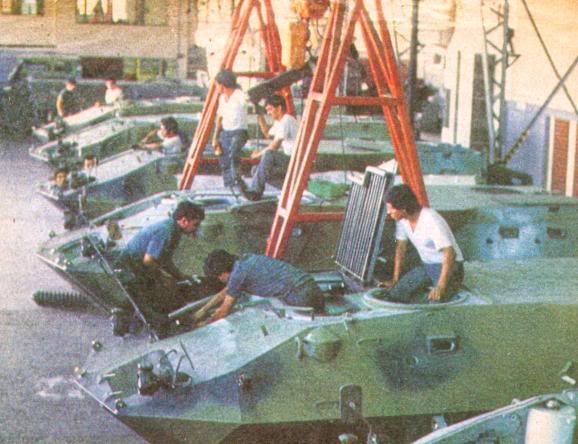
Production line at Cardoen
General configuration
The vehicle is faithful copy of the Mowag version, with its caracteristic angular hull, protected by light armor, 6-8 mm and 14 mm on the frontal arc. It protects the crew against machine gun rifle all around and heavy MG AP rounds forward. The location of the engine is on the left, with the transmission, and drive on the flat section, left, with a folded windhield. The commander is seater right behind.The center is occupied by the main turret and weapon system, and there are several hatches and pistol ports in the rear compartment, which can accept up to 12 infantry, on six seats either side, facing each others. They exit the vehicle via a single rear door, or the hatches above to fire underway, standing.
Engine & Performanceq
Data from Famae. The 8x8 vehicle is powered by a US detroit diesel 6-20 53, 300 hp. It is coupled with an Allison MPP 653 transmission, with a 5+1 speed configuration (1 reverse).Capable of 100 kph, 300 Liters diesel tank for a 780 km radius. It is able to climb a 70% slope, stay stable on a 40% side slope, cross a 0.5m vertical obstacle, and can turn on itself on 15.4 m.
The useful payload is 3,500 kgs, or 15 troops (less the driver) for the 4x4. The vehicle has a disconnectable differential and automatic individual locker, whereas the suspension comprised torsion bars below combined with vertical coil type combined with hydraulic shock dampers. The Famae Pirana is amphibious without preparation, capable of swimming at 10.5 kph, propelled by its two propellers at the rear, plus the wheels motion. It can also be air-dropped at very low altitude, on a prepared platform slowed by parachute.
Armament
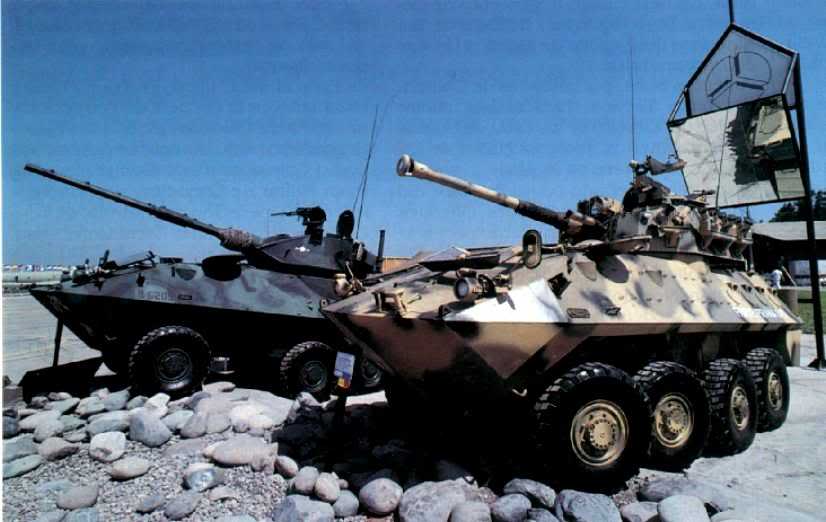
-The base APC is armed with a single Famae FN FAL on a pintle mount, installed on the commander's cupola. It is the same for the 6x6 and later 8x8 versions. The infantry aboard of course carries personal weapons, including grenades, ATGMS and MANPADS is required.
-The close support 90mm Cockerill Mark III version is armed with this low-velocity gun capable of delivering HE, Frag, AP, HESH and APFSDS rounds. It is also used on the Textron Marine & Land Systems LAV-150 and LAV-300, French Panhard Sagaie and AMX-13, Alvis Warrior, United Defense M113, Steyr SK 105, AV Tech Dragoon, MOWAG Piranha 6x6 and 8x8, Alvis Scorpion and many others.
-The second version was developed as a dedicated anti-tank variant featuring the Israeli HVMS Gun in a modified turret, also from cockerill. It was seen also on the Chilean M60 Sherman, probably the very last development of the venerable WW2 allied tank. The High-Velocity Medium Support Tank gun is the reverse of the 90mm in terms of penetrating power, best used with the APFSDS-T (Armor-Piercing Fin-Stabilized Discarding-Sabot, Tracer) developed by OTO Melara. Tests showed high precision at 2,500 m, with a muzzle velocity at 1,600 mps, penetrating the 80 mm thick side armur of two T-62 side-by-side at 2,000 m. It still could defeat 120 mm of 60° sloped armor also at 2,000 m.
Unfortunately, information is pretty scarce of the production of both vehicles. It seems based on photos alone that both never passed the production stage, marketed by Famae but not ordered by the Chilean Army.
-The other support variant, this time produced, is given a 120mm Mortar developed with Britain, or 120mm Famae-Brandt in the aft compartment, with two roof doors over the mortar when folded underway.
-The Mowag 6x6 TCM20 is a SPAAG, has seen a small production, unknown details.
-The Mowag 6x6 KUKA GDB-B20 sports a 25 mm Chain gun, used on the 4x4 VTP-2 Escarabajo. Walkaround
Variants
 APC: Simple cupola with a rail-mounted M1HB cal.05 for the commander
APC: Simple cupola with a rail-mounted M1HB cal.05 for the commander IFV 6x6 ECh, turret KUKA GDB-B20: One-man semi-remote turret with a 20mm autocannon.
IFV 6x6 ECh, turret KUKA GDB-B20: One-man semi-remote turret with a 20mm autocannon. IFV (Heavy): The vehicle has been tested with a 60mm (IMI on the 6x6), 90 mm Cockerill gun on the 8x8 (and even 120 mm).
IFV (Heavy): The vehicle has been tested with a 60mm (IMI on the 6x6), 90 mm Cockerill gun on the 8x8 (and even 120 mm). Fire support: 60mm HVMS (same as mounted on the Chilean M50 "super sherman")
Fire support: 60mm HVMS (same as mounted on the Chilean M50 "super sherman") Armored Ambulance: Raised rear compartment for six stretchers.
Armored Ambulance: Raised rear compartment for six stretchers. Command vehicle: Radar and raised aft compartment.
Command vehicle: Radar and raised aft compartment. IAI LAHAT ATGM vehicle (6x6)
IAI LAHAT ATGM vehicle (6x6) TCM-20 SPAAG: Variant with the modified Israeli Maxton mount with two Oerlikon guns
TCM-20 SPAAG: Variant with the modified Israeli Maxton mount with two Oerlikon guns 120mm mortar carrier
120mm mortar carrierDerivatives & Projects
Projects includes the VTP-1 Orca 6x6 APC based on a "commercial truck chassis", and the Unimog-based VTP-2 Escarabajo 4x4 for airfield defence.VTP-1 Orca
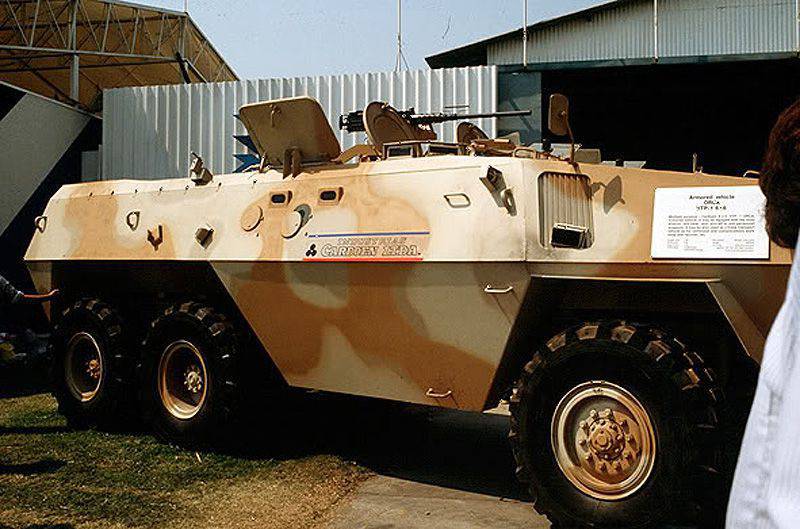
The VTP-1 Orca multi-purpose armoured vehicle, developed as a private venture by Industrios Cardoen was annouced in 1983. The prototype is different in appearance to that in the original drawings released in 1982 ('Jane's Armour and Artillery 1983-84' p. 265).
Description
The all-welded steel hull of the Orca provides complete protection from small arms fire up to 7.62mm in calibre and shell splinters. The engine compartment is at the front of the hull with air-inlets louvres in the top to allow access to the engine for maintenance. The driver sits to the rear of the engine on the left with the commander to his right, each having a single piece hatch cover in front of which are three fixed observation periscopes.The forward part of the troop compartment has overhead armour protection and a single-piece hatch cover each side that opens left and right with the rear part of the troop compartment roof being open. In each side of the forward part of the troop compartment are two firing ports with a vision block above.
Normal means of entry for the troops is via the rear of the vehicle which has a two-part hatch, of which the lower part folds downwards and the upper part opens to the right. The infantry sit on bench seats that run down either side of the hull. A number of 7.62mm and/or 12.7mm machine guns are mounted around the top of the troop compartment.
Variants
In addition to its primary role of troop transport, the manufacturer has proposed the vehicle for a number of other roles including towing a 105mm or 155mm artillery weapon as well as carrying its crew and ammunition, 20 to 30mm air-defence weapon, 60 to 90mm direct fire weapon, anti-tank with ATGWs, mortar carrier with 120mm mortar that can be traversed through 360 degree.Together with ammunition and crew, ammunition resupply vehicle, radar carrier to provide air-defence weapons with an early warning capability, command vehicle with a crew of 12+2, vehicle mounted communications relay station, mobile workshop, ambulance carrying up to 12 injured men, mobile hospital carrying an inflatable unit and a mobile emergency surgery.
SPECIFICATIONS
Crew: 2 + 16, Configuration: 6 x 6, Combat weight: 18 000 kg, Unloaded weight: 13 000 kg, Amour: 6 mm - 16 mm; Dims: 7.84 x 2.50 x 2.50 m, Powered by a V6 water-cooled diesel 260 HP at 2800 rpm with automatic transmission, 5 forward 1 reverse. Tyres: 14.00 x 20top speed 100 km/h. Fuel capacity: 400 litres, range: 1000 km. Capable of climbing a gradient 60% and side slope of 30%.VTP-2 Escarabajo
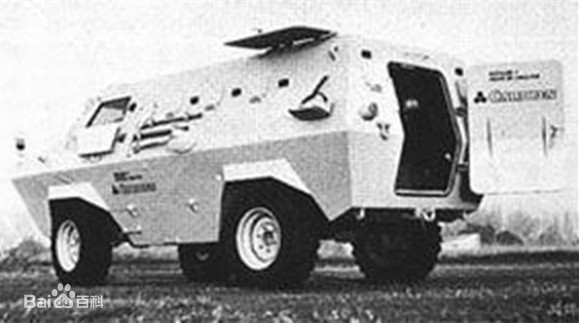
This one, like the Orca, will be seen in an upcoming post. It is fitted either with a small one-man turret or a Kuka turret with a 25 mm cannon.
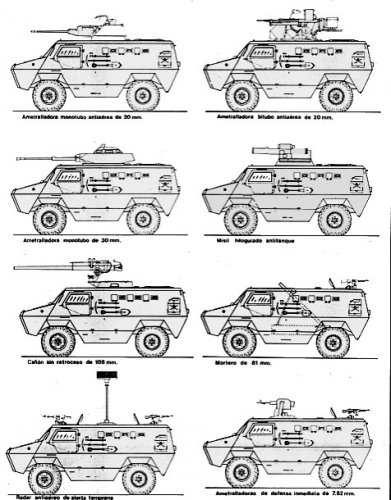
VTP-2 Escarbajo Variants
Service
The Chilean Army used the Famae Piraña 6x6 family since 1981. The license was acquired by Cardoen, which produced with Famae around 200 vehicles (probably the base APC). In addition were the 120 mm mortar carrier, TCM-20 AA and the radar carrier with Elta EL/M 2106, ambulances, command posts and ATGM variant, plus Kuka turret with a 25 mm cannon or the minesweeper variant with a Pearson Engineering plow. In 1987 the Famae company acquired the license for the Piranha 8x8, the first being delivered in 1990, 100 planned, 22 produced until 1997 and purchase instead of 128 second-hand M-113A1 Italian APCs. The Piranha 8x8 only is used as APC, with some optionally mounting the Pearson plow minesweeping gear.The Mowag 6x6 served with armored rifle batallions stationed in the north, the 8x8 were assigned to San Bernardo Infantry School. In the mid-1990s, the 6x6s were reassigned to mechanized infantry units. Mechanized infantry battalions however received in between M113A2 and AIFV/YPR-765. Both 6x6 and 8x8 Piranas are concentrated since in the Infantry Regiment No.1 Buin.
Some Piraña 6x6 were deployed under the United Nations Stabilization Mission in Haiti (Minusmah) in 2004-2017. Limache Logistics Regiment No. 3 was awarded in 2018 the full restauration of 12 Piraña 6x6 APC and one Piraña 6x6 ambulance after the operation. The fleet is likely to be discarded in the 2020s, with the 8x8 remaining perhaps until 2030 is modernized.
Links/sources
Links
On taringa.net, 6x6 and 8x8www.infodefensa.com
On en.topwar.ru
VTP1 Orca
Chilean Defence Industry
secretprojects.co.uk
6x6 and 4x4 On taringa.net
About Famae, wiki es
Videos
FAMAE ATGMTanque Piraña 8x8D Fabricado por FAMAE Chile año 93, nice doc
Piraña 6x6 el vehículo icono del Ejército de Chile
El Vehiculo "PIRAÑA 8x8" Blindado - Simbolo del Ejercito Chileno
Famae Piraña specifications | |
| Dimensions | Same as the Mowag Piranha 6x6 |
| Total weight, battle ready | 10.500 kg ( lbs) |
| Crew | 3+6 (driver, gunner, commander, 6 infantry) |
| Propulsion | Detroit diesel 6-20 53, 300 hp |
| Suspension | Torsion bars, shock dampers |
| Speed (road) | 100 km/h (60 mph) |
| Range | 780 km ( mi) |
| Armament | FN MAG or M2HB 0.5 cal. (APC) |
| Armor | STANAG 2, 10 mm max |
| Total production | 250 6x6 +25 8x8 in 1982-1992 |

The base APC Piraña I 6x6
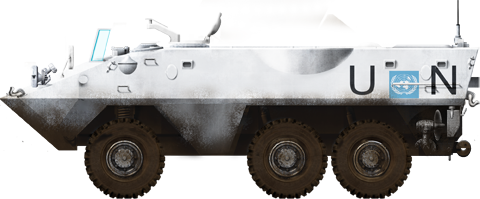
The same operating under UN colors with MINUSMA, Haiti 2004
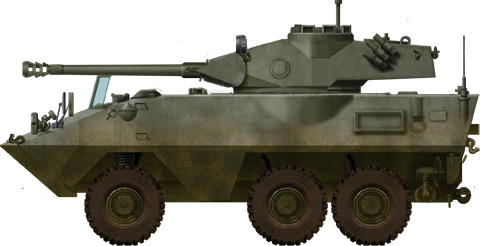
Mowag Famae Pirana in the Heavy Support Version with the Cockerill Mk.III gun and turret
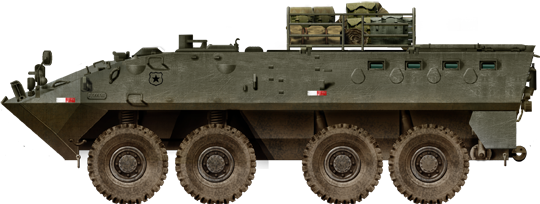
Pirana II, the 8x8 APC version, 25 built, 1990s.
Gallery
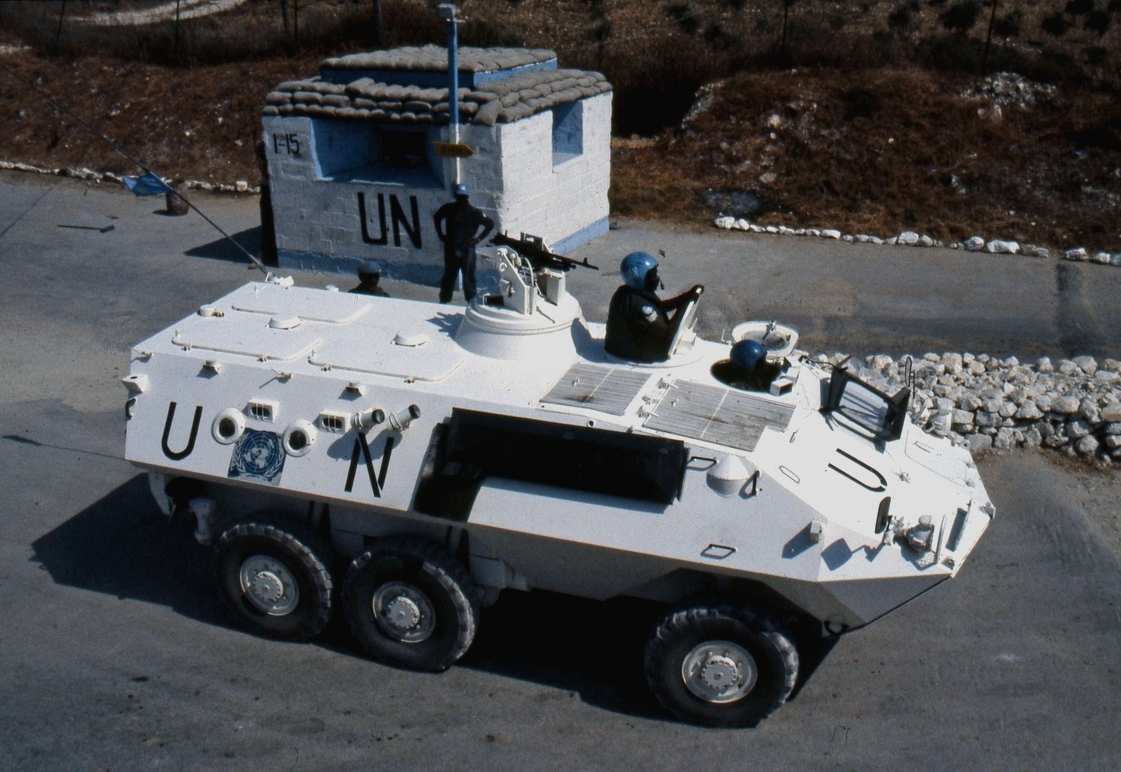
In UN service, Haiti 2004-2017
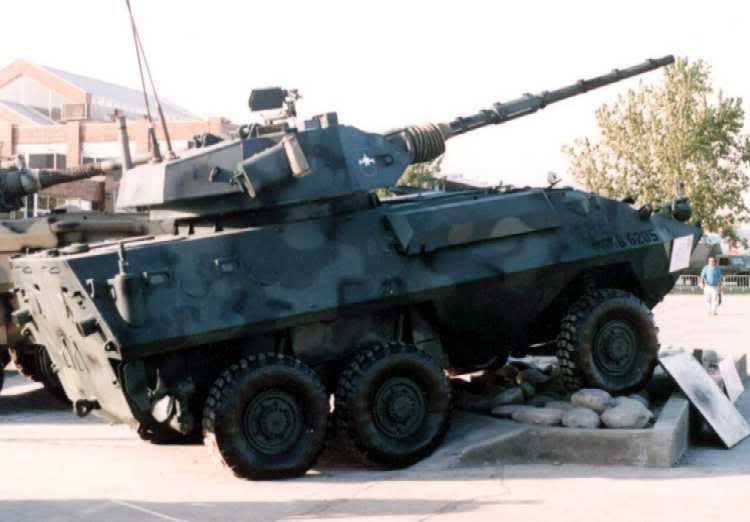
IMI Turret 60mm HVMG version
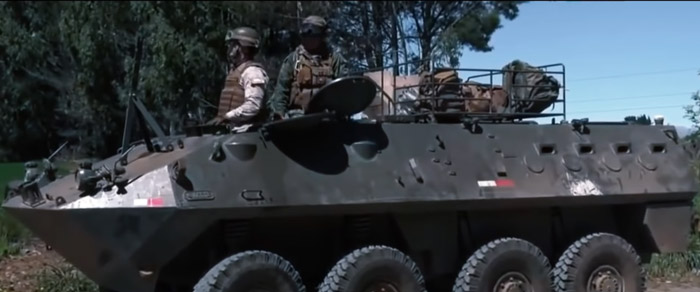
8x8 APC Pirana II in the 1990s
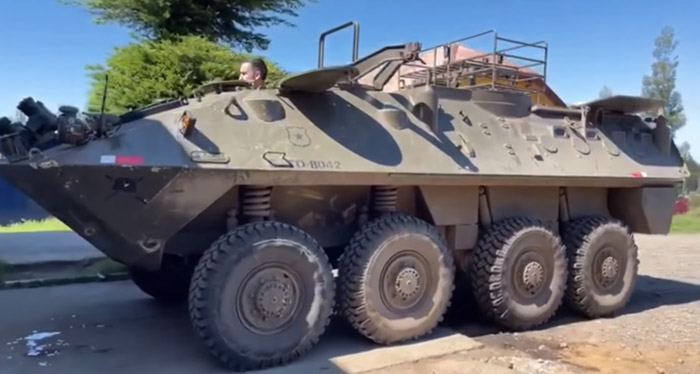
Same
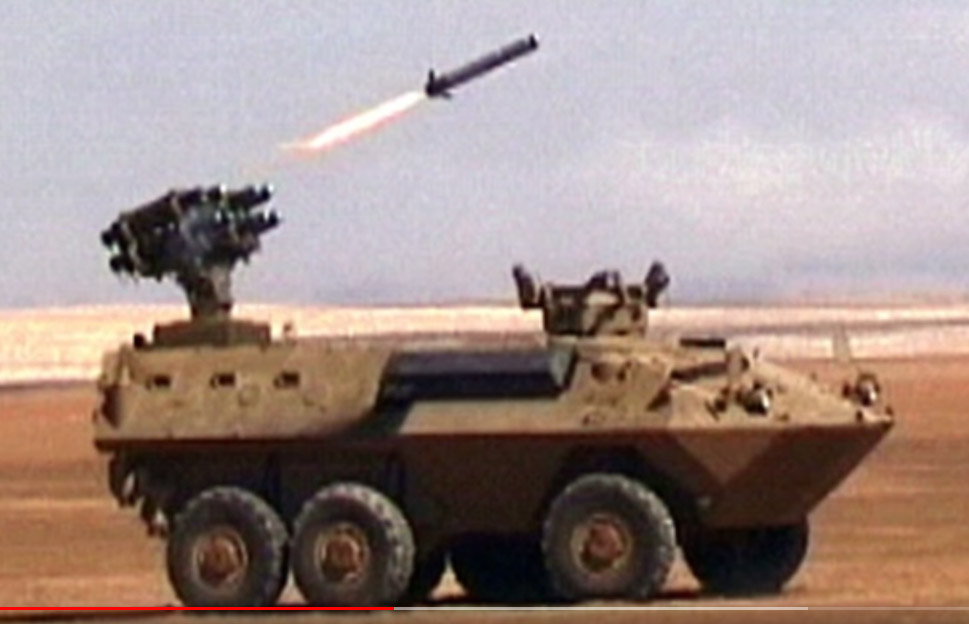
ATGM LAHAT variant

Famae Pirana TCM-20 SPAAG
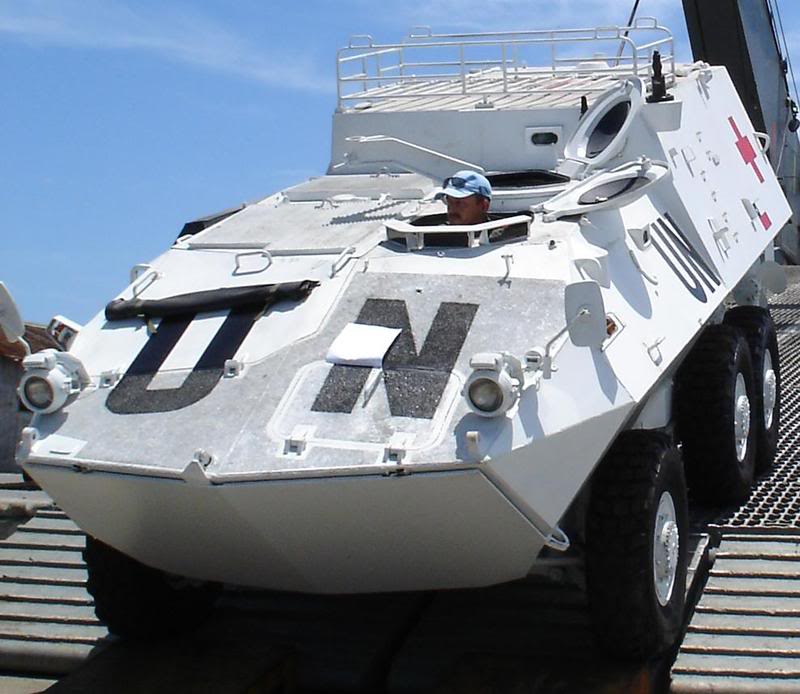
Famae Pirana Ambulance
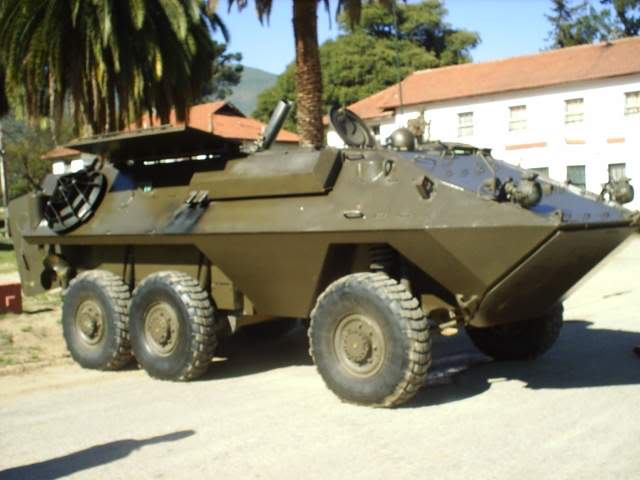
Famae Pirana Mortar Carrier
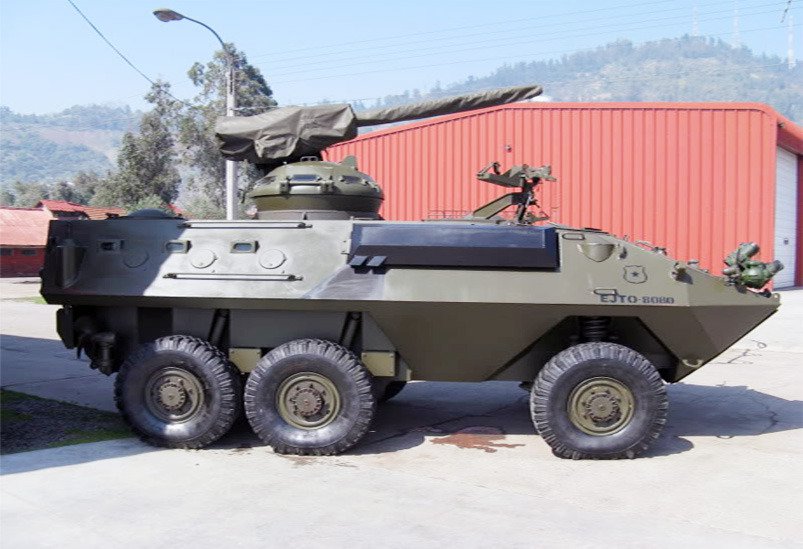
KUKA GDB-B20 turret
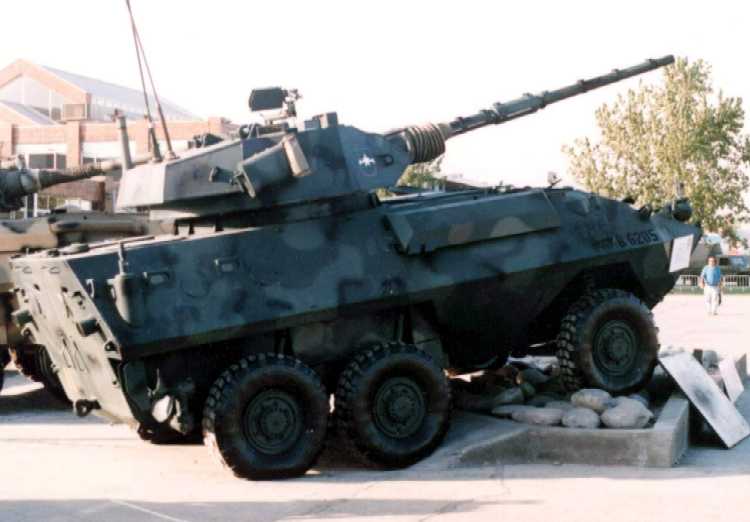
FMP-3, antitank variant with the HVMG

Cold War Tanks


































Cold war tanks posters

Cold War Main Battle Tanks

Cold War Soviet Army
Museums, Movies, Books & Games
The Tanks and Armor in pop culture
Tanks and armored vehicles in general are only really grasped when seen first person: The mass, the scale, it's all there. Explore also the way tanks were covered in the movie industry, in books and in video games.Movies:
Best tanks movie on warhistoryonline.com
On imdb.com
On bestsimilar.com/
miltours.com
liveabout.com/
watchmojo.com
Video Games:
pcgamesn.com
historyhit.com
levvvel.com
vg247.com/best-tank-games
mmobomb.com/
alienwarearena.com
